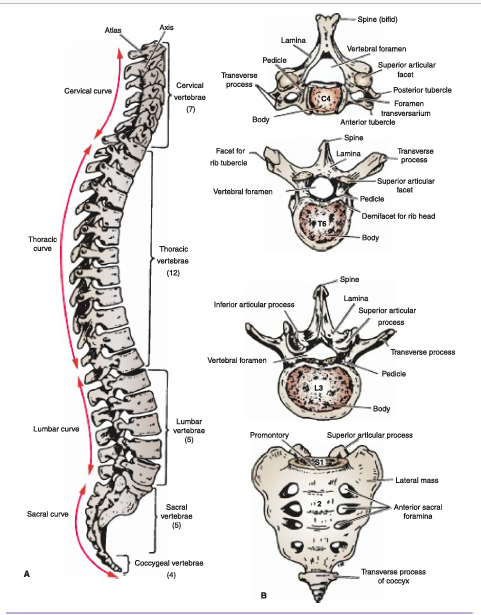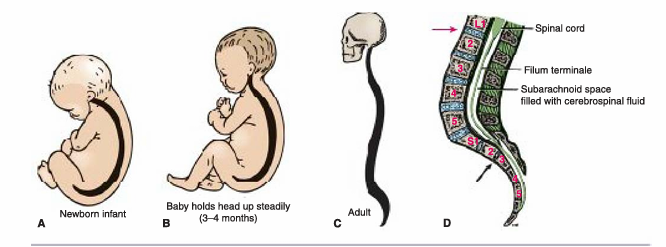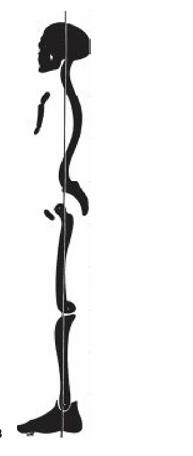
Vertebral Column Curvatures
 المؤلف:
PHD. LAWRENCE E. WINESKI
المؤلف:
PHD. LAWRENCE E. WINESKI
 المصدر:
Snells Clinical Anatomy by Regions
المصدر:
Snells Clinical Anatomy by Regions
 الجزء والصفحة:
10th E ,P 50
الجزء والصفحة:
10th E ,P 50
 2025-01-19
2025-01-19
 1033
1033
The adult vertebral column (m the standing position) is aligned to form four regional curvatures in the sagittal plane (Fig. 1; also see Fig. 2). The thoracic and sacrococcygeal curves have anterior concavities; the cervical and lumbar curves have posterior concavities.

FIG 1 / A. Lateral view of the vertebral column. B. General features of different kinds of vertebrae.

FIG 2 / A-C. Curves of the vertebral column at different ages. D. In the adult, the lower end of the spinal cord lies at the level of the lower border of the body of the first lumbar vertebra (top arrow}, and the subarachnoid space ends at the lower border of the body of the second sacral vertebra (bottom arrow}.
Collectively, the curves serve to align the center of gravity of the body through the pelvis, thereby counteracting the weight of the thoracoabdominal viscera, allowing the head to balance on top of the vertebral column, and enabling upright posture (see Fig. 3).

FIG3/ Lateral view of the skeleton showing the line of gravity. Because the greater part of the body weight lies anterior to the vertebral column, the deep muscles of the back are important in maintaining the normal postural curves of the vertebral column in the standing position.
However, in initial development, the fetal vertebral column has only one continuous anterior concavity . As development proceeds, the lumbo- sacral angle appears at the junction of the L5 and S1 vertebrae, forming two anteriorly concave curves. After birth, the cervical curve forms In association with the child raising his or her head and keeping it poised on the vertebral column . Toward the end of the 1st year, the lumbar curve forms in association with the child beginning to sit up and stand upright. Because the thoracic and sacrococcygeal curves retain their initial prenatal anterior concavities, these curves are termed primary curvatures. Because the cervical and lumbar curves form mainly postnatally and take on posterior concavities, these curves are termed secondary curvatures. The development of the secondary curves results in a modification in the shape of the vertebral bodies and the intervertebral discs .
The lumbar curve ls more pronounced in adult females than in males. During the later months of pregnancy, with the increase in size and weight of the fetus, women tend to increase the lumbar concavity in an attempt to preserve their center of gravity. In old age, the intervertebral discs atrophy, resulting in a loss of height and a gradual return of the vertebral column to a continuous anterior concavity.
In late childhood, development of minor lateral vertebral curves in the thoracic region is common. This is normal and is usually caused by the predominant use of one of the upper limbs. For example, right-handed persons will often have a slight right-sided thoracic convexity. Slight compensatory curves are always present superior and inferior to such a curvature.
 الاكثر قراءة في علم التشريح
الاكثر قراءة في علم التشريح
 اخر الاخبار
اخر الاخبار
اخبار العتبة العباسية المقدسة


